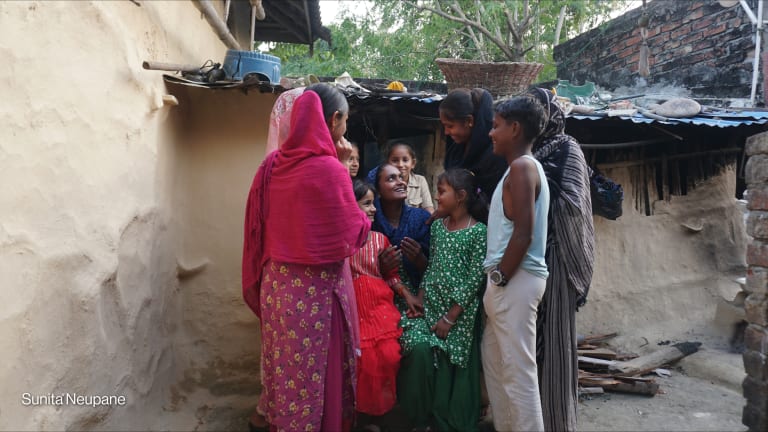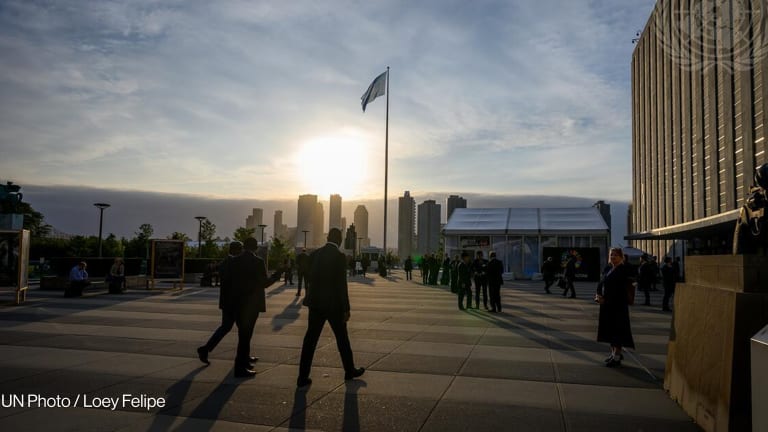
This September, I joined Devex, UNICEF, and Education Cannot Wait to discuss the big ideas that came out of the Transforming Education Summit, the United Nations forum to tackle the escalating global education crisis. This year, education has been a focal point of the U.N. General Assembly for the first time. Over three days, world leaders, organizations, and young people discussed the purpose of education and the need to fund it better. We saw more than 130 nations commit to “rebooting” their education systems and the announcement of new funding mechanisms and pledges to support this commitment.
But, as Leonardo Garnier, special adviser to the summit, warned, “We are seeing a crisis of quality. … It doesn’t make sense to invest a lot of money but have people who cannot read or think creatively.”
As an implementing partner that helps governments and agencies turn ambitious commitments into programs of action, I want to share the following three reflections on translating the dialogue into quality education for every child.
The power of teachers
The greatest consensus was around the importance of teachers.
Across countries and sectors, we heard the message that confident and well-resourced teachers create classrooms that are resilient to challenges and enable higher-quality learning — and that teachers need support from the system to do their best.
This might not be huge news, but what is new and growing is an awareness of teachers as a powerful lever for creating wider change in education systems. They are not passive recipients of reforms, but the most important implementers. A recent policy brief from the Brookings Institution and Sierra Leone suggests redesigning systems starting with the practice of teaching.
I would have liked to hear from more teachers at the summit — and they must be an integral part of what we do next.
The importance of context
The summit saw a rejection of one-size-fits-all solutions. In her closing address, U.N. Deputy Secretary-General Amina Mohammed stressed that “context matters and so too does national ownership and realities.” Delegates recognized people have remarkably diverse needs, which can change over time, and that being able to identify and meet these needs is an essential first step in education reform.
We need to look at the diversity within each context too and address growing inequalities — the impact of gender, the experience of refugees, and other vulnerable groups, special educational needs, and more.
Listening to different voices is vital to understanding context. At the summit, I was excited to see the inaugural Youth Declaration present the vision of more than half a million young people for transforming education. Again, we must include teachers too — who better to identify and understand the specific struggles and strengths of the classroom than those who work in them every day?
The mechanics of implementation
There were other voices that were not present but are central to putting the ideas at the Transforming Education Summit into action.
This includes a significant middle layer of operatives within our education systems: administrators, people writing assessments, teams developing the curriculum, teacher trainers, small publishers, authors, and so on.
These groups comprise a key coalition without which implementation would grind to a halt. To make sure we don’t develop education reforms in a bubble that bursts as soon as it hits reality, we must place more focus on the mechanics of how it happens and who is involved.
The absence of their voices meant that there were questions of implementation we did not sufficiently address at the summit. One is technical capability: How do we know what strengths and capacities we need to build in that middle layer of the system to make change possible?
Another is fidelity of vision. Knowing that interventions seldom look the same in the real world as they do on paper, how can we work together to identify what gets chipped away and why?
This is a potential watershed moment. As my co-panelist at Devex @ UNGA 77, Yasmine Sherif of Education Cannot Wait, said: “Education is the foundation for all Sustainable Development Goals.” She described the need for more funding to realize this potential. A spotlight on effective implementation must go hand in hand with this.
The alternative to transforming our future is devastating, with the Minister of Federal Education of Pakistan telling the summit that the recent floods have already affected the education of 7 million students, and the Ministry of Education and Science for Ukraine talking of the disruption to the education of 7.5 million children as a result of Russian aggression.
With just a few years left to realize our collective vision for a more sustainable world by 2030, as our other co-panelist Robert Jenkins of UNICEF posed, the challenge is now one of follow-up.
At the Cambridge Partnership for Education, we are talking to our partners in governments and organizations about what this means today, tomorrow, and in a decade. Implementing change on the huge scale the next generation needs and deserves will take truly sustained effort and collaboration. We’re in this for the long haul.








